According to the official website of the Shanghai Municipal Quality Supervision Bureau, in order to provide consumers with more scientific and fair product quality information, the Shanghai Quality and Technical Supervision Bureau commissioned the Shanghai Metrology and Testing Technology Research Institute to produce and sell the city on the basis of expert review. Some air purifier products were sampled and tested using a uniform standard method. The relevant information is hereby notified as follows:
First, the test results
A total of 39 batches of samples were taken for this quality test, according to GB 4706.1-2005 "Safety of Household and Similar Electrical Appliances Part 1: General Requirements" and GB 4706.45-2008 "Special Requirements for Safety Air Purifiers for Household and Similar Electrical Appliances" 》Detect safety indicators. According to GB/T 18801-2015 "Air Purifier" and T310106001-C001-2015 (APIAC/LM 01-2015) "Indoor Air Purifier Purification Performance Evaluation Requirements" to detect the amount of clean air, suitable area, PM2.5 clean air Amount, formaldehyde clean air volume, toluene clean air volume, particulate matter purification energy efficiency, formaldehyde purification energy efficiency, toluene purification energy efficiency, noise (sound power level), particulate matter purification amount, particulate matter purification life, particle size 0.1 μm to 1.0 μm particulate clean air Performance indicators such as amount, formaldehyde purification efficiency, and toluene purification efficiency.
After testing, the safety indicators of 39 batches of samples all meet the requirements. The specific test results of other performance indicators are shown in the next section.
Second, the interpretation of indicators
(1) Clean air volume of particulate matter
The amount of clean air (CADR for short) is an internationally recognized parameter for demonstrating the ability of air purifiers to purify particulate pollutants. It is also defined as the specification parameters of products. It indicates the rate at which the air purifier provides clean air and is used to estimate the applicable area of ​​the product as the main reference for consumers to purchase and use the product. The larger the value, the larger the applicable area of ​​the product, if it is in the same size space. Used in, the faster the purification of particulate matter).
(2) Applicable area
Applicable area can intuitively guide consumers to purchase products that suit their needs. GB/T 18801-2015 "Air Purifier" stipulates "applicable area = clean air volume of particulate matter × (0.07 ~ 0.12)". The measured particle size of the 39 batches of this test is 70m?/h~800m?/h (applicable area is 5m2~96m2), among which 13 products are larger than 450m?/h (applicable area is more than 32m2), 17 models The product is between 300m?/h and 450m?/h (applicable area 21m2~54m2), 9 products are between 150m?/h and 300m?/h (applicable area 11m2~36m2), 1 product is less than 150m? /h (applicable area is less than 11m2). (Table 1)
Table 1 Clean air volume and applicable area test results
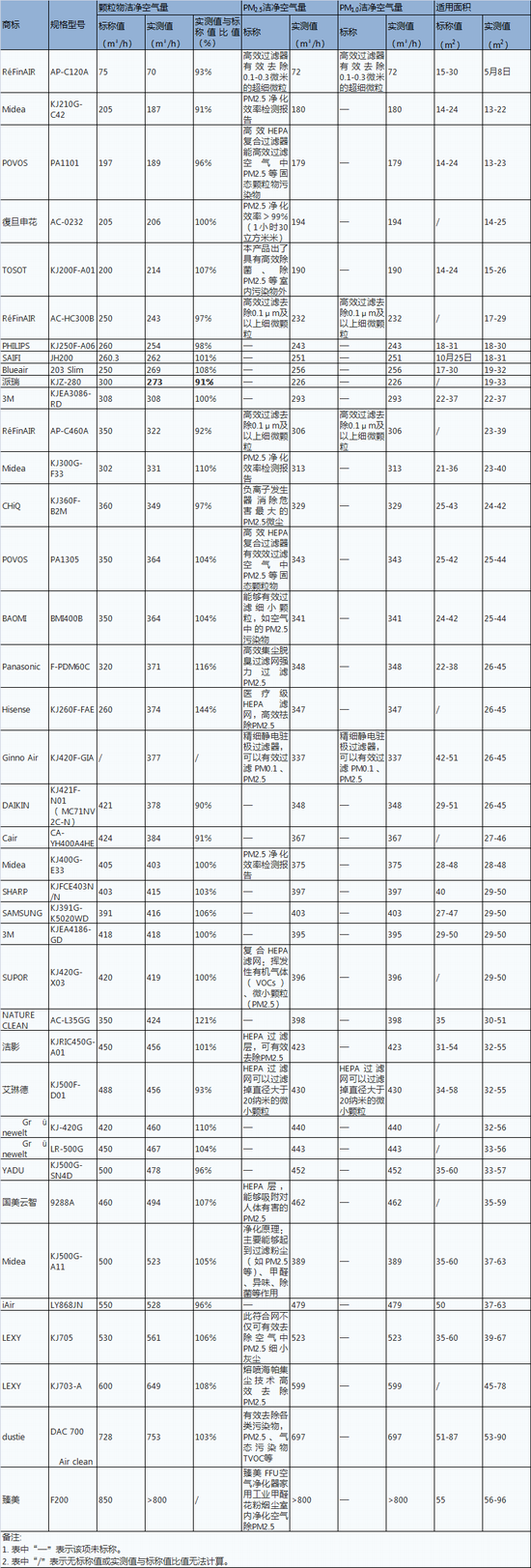
(3) Purification function of gaseous pollutants
In this test, formaldehyde and toluene were selected as characteristic pollutants. According to the provisions of GB/T 18801-2015 and T310106001-C001-2015 (APIAC/LM 01-2015), 39 batches of products were cleaned with formaldehyde and cleaned with toluene. Detection of air volume, formaldehyde purification efficiency, and toluene purification efficiency.
Formaldehyde (toluene) clean air volume refers to the rate parameter of the formaldehyde (toluene) purification ability of the air purifier under rated conditions and specified test conditions. Used in the same size space, the larger the value, the faster the formaldehyde (toluene) is purified.
The purification efficiency of formaldehyde (toluene) refers to the removal efficiency of formaldehyde (toluene) after 1 h of operation of the air purifier under the nominal applicable area conditions, and is obtained by simulation test under specific conditions. This indicator is closely linked to the product's nominal use conditions (ie, applicable area) and gaseous pollutant removal capabilities.
1. Formaldehyde clean air volume and formaldehyde purification efficiency
24 products are marked with the amount of formaldehyde clean air. Refer to GB/T 18801-2015, “The measured value of clean air should be no less than 90% of the nominal valueâ€, and 24 products meet the requirements of the standard. (Table 2)
Table 2 Test results of formaldehyde clean air and formaldehyde purification efficiency
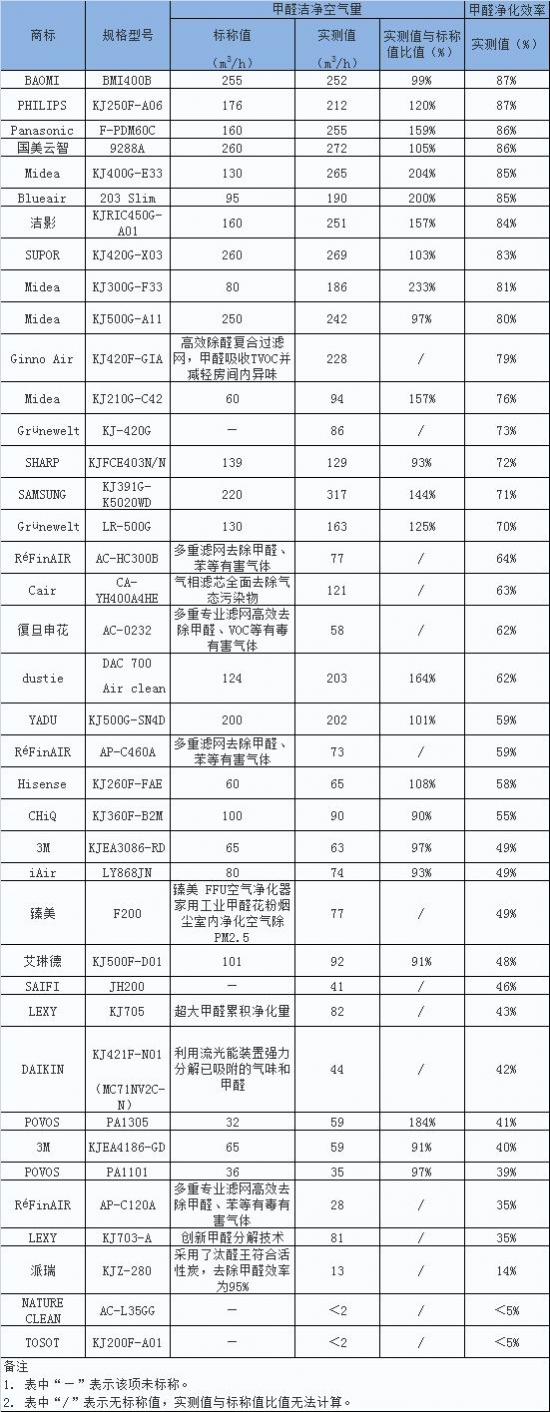
2. Toluene clean air volume and toluene purification efficiency
The three products are nominally cleaned with toluene. Refer to GB/T 18801-2015, “The measured value of clean air should be no less than 90% of the nominal valueâ€, and the three products meet the standard requirements. (table 3)
Table 3 Test results of toluene clean air and toluene purification efficiency

2. Formaldehyde purification energy efficiency
35 models claimed to have formaldehyde purification capacity, 32 models reached high efficiency, 3 models reached the qualified level, and 4 models did not reach the qualified level. (table 5)
Table 5 formaldehyde purification energy efficiency test results

3. Toluene purification energy efficiency
The 17 products have not claimed to have the ability to purify toluene. After testing, 27 models have reached the high-efficiency level, 6 have reached the qualified level, and 6 have not reached the qualified level. (Table 6)
Table 6 Results of toluene purification energy efficiency test
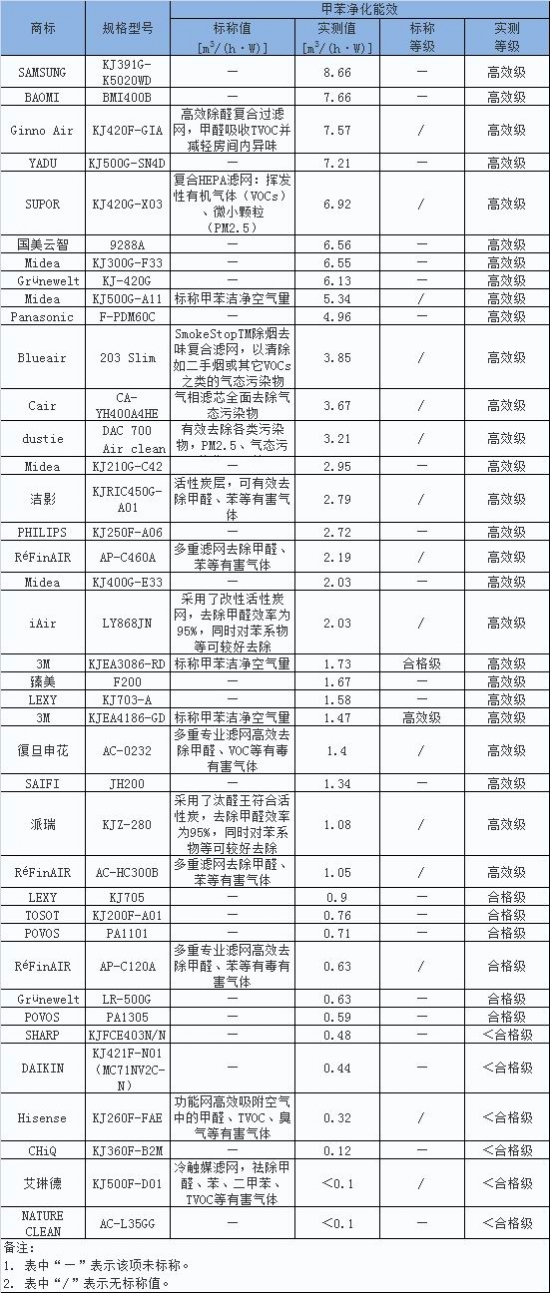
(5) Noise
From the perspective of comfort, products with comparable capabilities, the lower the noise, the better. 39 batches of products were tested in accordance with the noise (sound power level) test method specified in GB/T 18801-2015. (Table 7)
Table 7 Noise (sound power level) test results
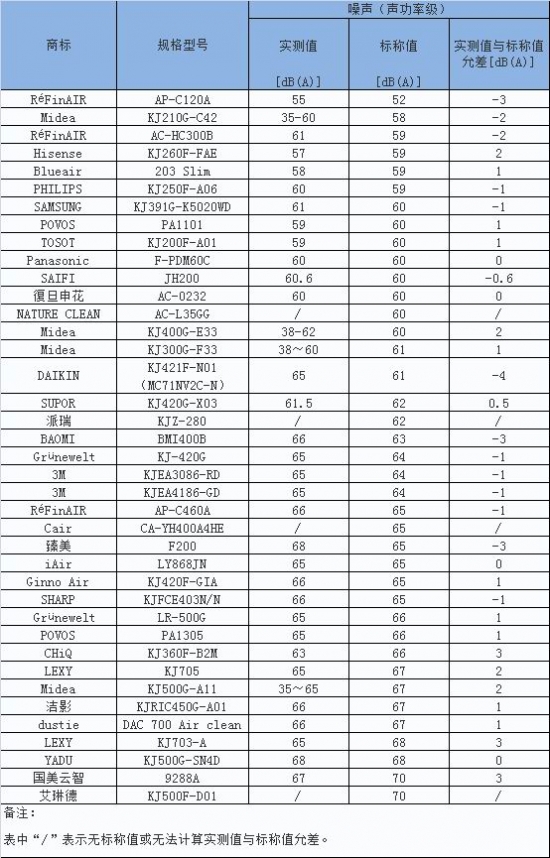
(6) Accumulated purification and purification life of particulate matter
The cumulative amount of particulate matter (CCM) is a parameter for the cumulative purification capacity of the particulate matter in the rated state and the specified conditions, and indicates that the clean air amount of the air purifier is attenuated to 50% of the initial value, and the particulate matter is accumulated and purified. Total mass (mg). Purification life refers to the ratio of the cumulative purification amount of the target pollutant marked with the air purifier to the daily average processing calculation amount corresponding to the air purifier, which is expressed by (day).
39 batch products were tested for cumulative purification of particulate matter according to the provisions of GB/T 18801-2015, and the purification life of particulate matter was calculated. (Table 8)
Table 8 Accumulated purification amount and purification life detection of particulate matter
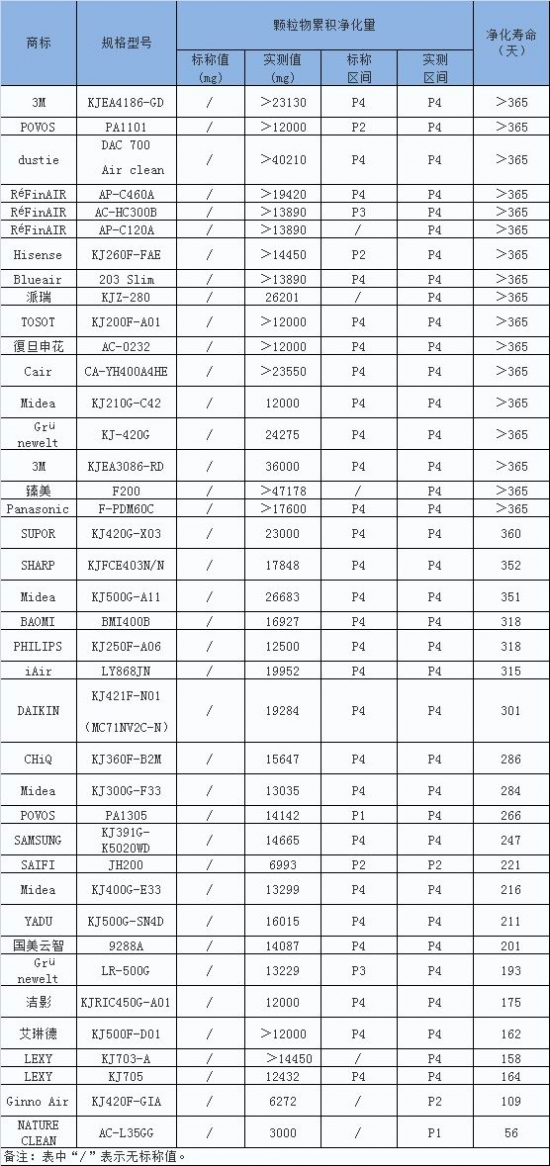
  Third, consumption tips
(1) When purchasing
1. Select the air purifier with the corresponding purification function according to the pollutants to be removed. For example, in the smog and PM2.5-prone areas, products with particulate matter purification function are selected. The newly-decorated rooms are selected to have the functions of purifying volatile organic compounds such as formaldehyde and toluene.
2. Select the product that matches the area and room area. The applicable area is generally calculated by multiplying the amount of particulate clean air (CADR) nominally on the product by 0.1.
3. The air purifier with the same purification ability selects the product with low noise during the maximum operation.
4. The air purifier with the same purification ability, choose to purify the products with high energy efficiency.
5. Select the theoretical purifying air purifier, the longer the cycle of replacing and cleaning the filter, and the lower the cost of use.
6. Purchase air purifier products through formal channels and select products with identification performance indicators and implementation standards.
7. When purchasing, the manufacturer is required to provide the test report of the third-party inspection agency to confirm that the measured values, test methods and product promotion of each indicator are consistent.
(2) When using
1. Before using the air purifier, carefully read the product manual to ensure the correct use of the product.
2. When the air purifier is running, place it in the center of the room as much as possible, and ensure that there is no obstruction near the air outlet to ensure the actual circulation effect of the indoor air.
3. At the beginning of the operation of the air purifier, the maximum gear can be operated for a period of time, and then adjusted to other gears, which can quickly purify the air and reduce the discomfort caused by noise.
4. When using the air purifier, try to keep the doors and windows closed. For long-term use, pay attention to the stage ventilation.
5. If it is used to purify the indoor pollutants (such as formaldehyde, benzene, toluene, etc.) after the decoration, it can be used after effective ventilation.
6. Regularly replace or clean the filter to ensure the purification effect of the air purifier and avoid secondary pollution caused by the failed filter. Purchase original filters through formal channels to ensure reliable purification and quality when the product continues to be used.
7. Before the long-time unused air purifier is turned on again, check the cleanliness of the inner wall and the state of the filter, do the corresponding cleaning work, and replace the filter if necessary.
Lift Elevator,Mrl Passenger Lift,Goods Passenger Lifts,Vvvf Drive Passenger Elevator
XI'AN TYPICAL ELEVATOR CO., LTD , https://www.chinaxiantypical.com